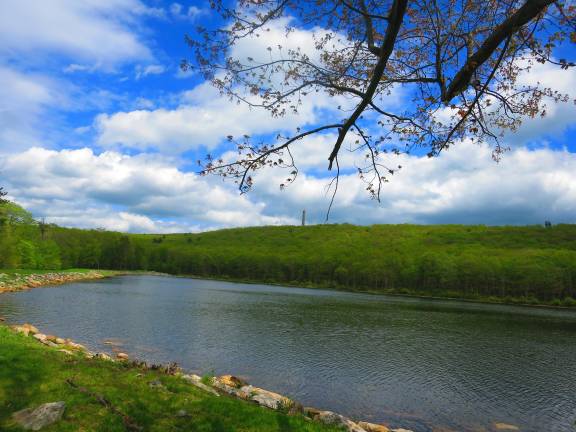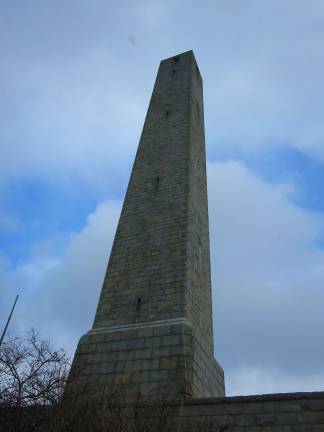Local hikes, global gear
Hiking basics have come a long way since the days of work boots and tube socks


So glad I already have all the outdoor gear I need! I’ve been looking more closely into our global hiking supply chain. My favorite boots, the only ones that don’t mangle my high-arched, wide-toed feet? Germany. My daypack, made especially for women with long torsos? The Philippines. Gore-tex, the fabric that keeps me dry and warm through rain and sweat and whipping winds? The U.S.! Whew, good. We’re the world’s major supplier of Gore-Tex. If I had to pick one hiker thing to not worry about, I suppose that would be it. You can waterproof fabric by rubbing it with linseed oil, but I’d rather not.
And my favorite Merino wool socks? Made in Tennessee. Okay, nice. In our early hiking days, back in the ‘80s, we’d hit the trail in tube socks, which came in super-affordable 12-packs. Over those I wore work boots, inflexible and ponderous contraptions better suited to kicking apart rotten stumps than hiking over them. I had thought hot spots — the tender places that tend to get sore with sustained use — were just part of the hiker’s burden. My ill-designed feet were always in one stage or another of toughening – reddening, peeling, healing, scarring – and so I always carried with me (in my clumsy college bookbag, which dug painful welts into my shoulders!), a generous supply of Band-Aids. Now, thanks to my Tennessee socks and German boots, my feet in their unscarred loveliness would compare favorably with even the most pampered appendages.
I’ve gone through so many pairs of boots! Recently I excavated a high shelf onto which I’d tossed many of my old boots from over the years. They are unsalvageable, but I saved them anyway. Why? Because of a shamanistic belief that the joy I felt hiking in them still resides within? I considered their chewed soles and broken stitching, and with Marie Kondo-like resolve, thanked them for their service and tossed them in the trash. I wish they’d lasted longer. But the problem is beyond cure; it started 18,000 years ago, when the retreating glacier dumped the continent’s nastiest rocks on what would become our local trails. Place a brand-new pair of hiking boots on a New Jersey trail, check them an hour later, and you’ll find signs of wear.
But one thing about those Jersey rocks: they drain beautifully. This is useful following periods of intense rain, which can turn soft trails into muddy streams. After one such rainy spell we headed to the loop trail circling High Point Monument, which at 1,800 feet marks the highest point in the state. Monument Trail follows a gently undulating hogback that stays up high and offers exhilarating views of Vernon Valley and the Delaware River. That day, the ridge was crowned with flowers: the pinks of early azalea and the pin cherry’s fluffy white blooms.
Many states have monuments that mark their highest points, but New Jersey’s, built in 1930, is the grandest. It is an obelisk, an ancient Egyptian design that renders the sun’s rays in stone. The High Point obelisk, at 220 feet high, is visible from 50 miles away and serves as a point of orientation for us as we hike other trails on the ridge. Here, up close, its immensity stuns.
You can start the hike from the big paved parking lot surrounding the monument, but we set out from the small dirt lot at Steeny Kill Lake, right off Route 23, for a more pilgrim-like approach. Where the spur trail meets the loop trail, a waterfall crashes loudly; we turned right and continued to climb until we saw the granite mass through the trees. It was thrilling to see such a grand structure emerge so quietly through the woods.
The obelisk filled more and more of our sight until we found ourselves standing at the base, squinting into the sky, tipped off balance by awe. A plaque there reads: “To The Glory and Honor and Eternal Memory of New Jersey’s heroes by land, sea, and air, in all wars of our country.” Tom and I note that the obelisk had been built for our dads, a couple of Jersey guys who were children when the monument was built, then went off to fight in World War II, his dad to Germany, mine to the Philippines. What would we tell them, if it were possible to tell them, about the changes we’ve seen since we saw them last? About the way the country is changing? About uncertainty of our times, so that even a granite obelisk feels ungrounded?
From the viewing platform we fixed our sight on features eternal: the Catskills and the Poconos. Over there, the notch at Culvers Gap; and there, the black dirt flats; and just to the north, the Delaware River, wide and mud-brown from all the rain.
SNEEK PEAK
Length: 5.7 miles
Blazes: Steeny Kill Lake Trail, blue (0.7 miles); Monument Trail, red/green loop (5 miles)
Trailhead: Steeny Kill Lake parking lot, Route 23, High Point State Park, Montague, N.J.